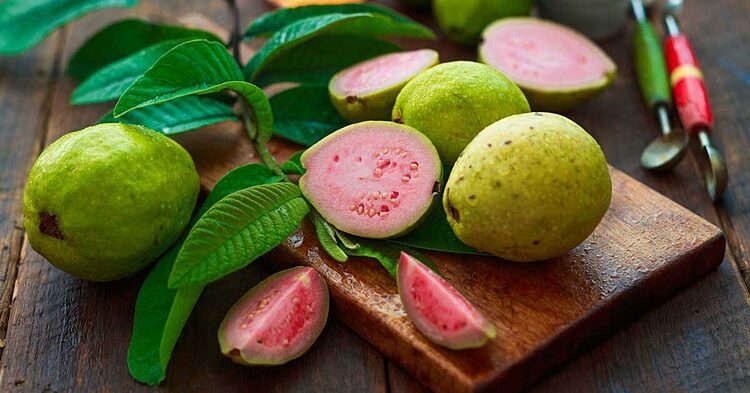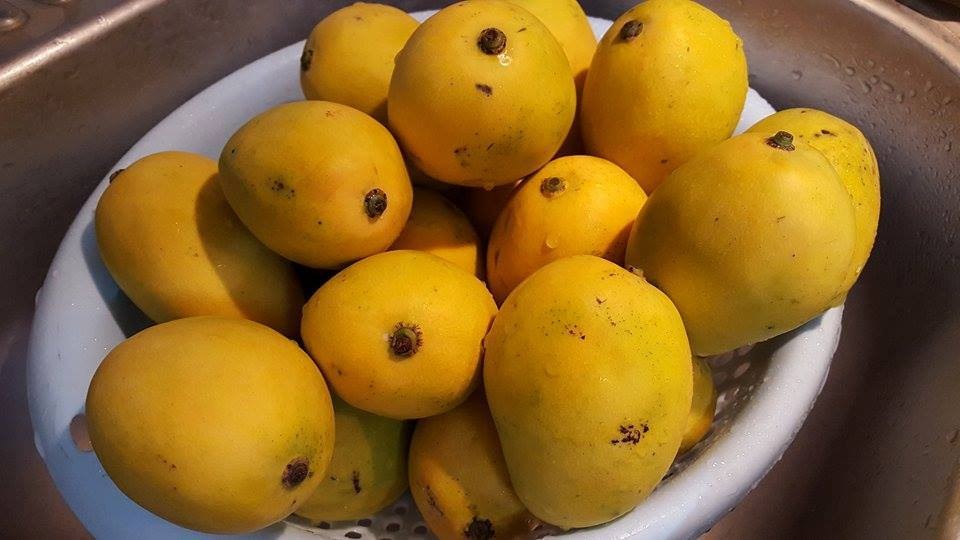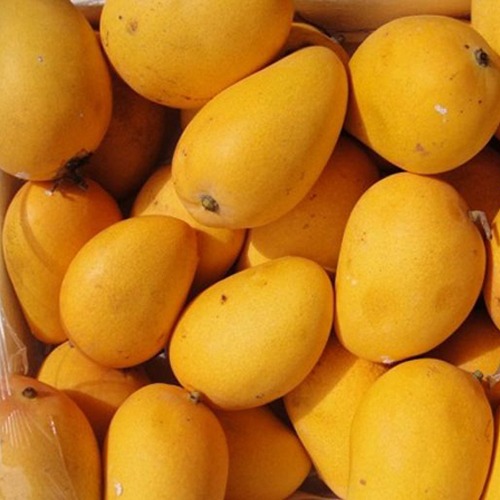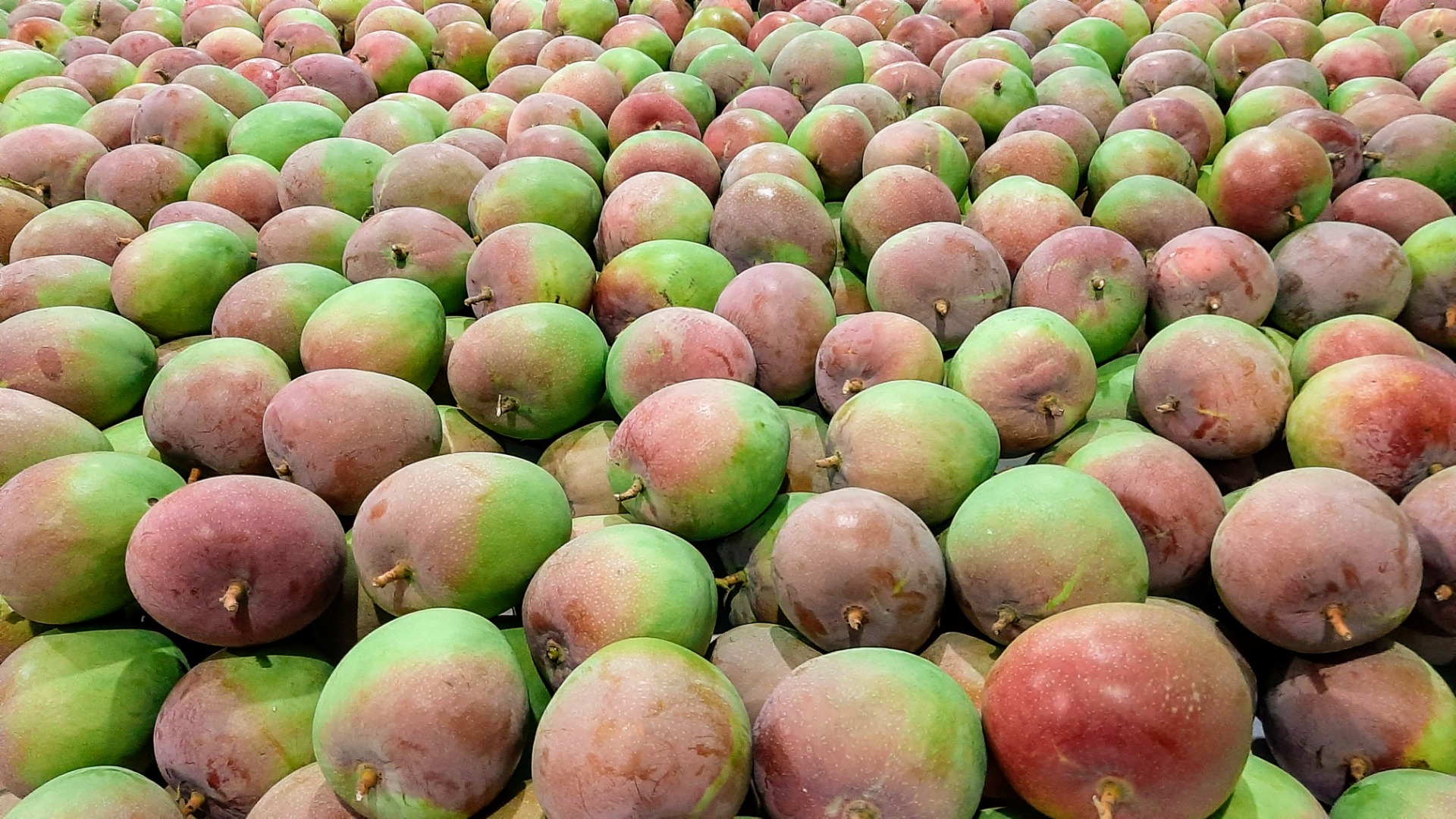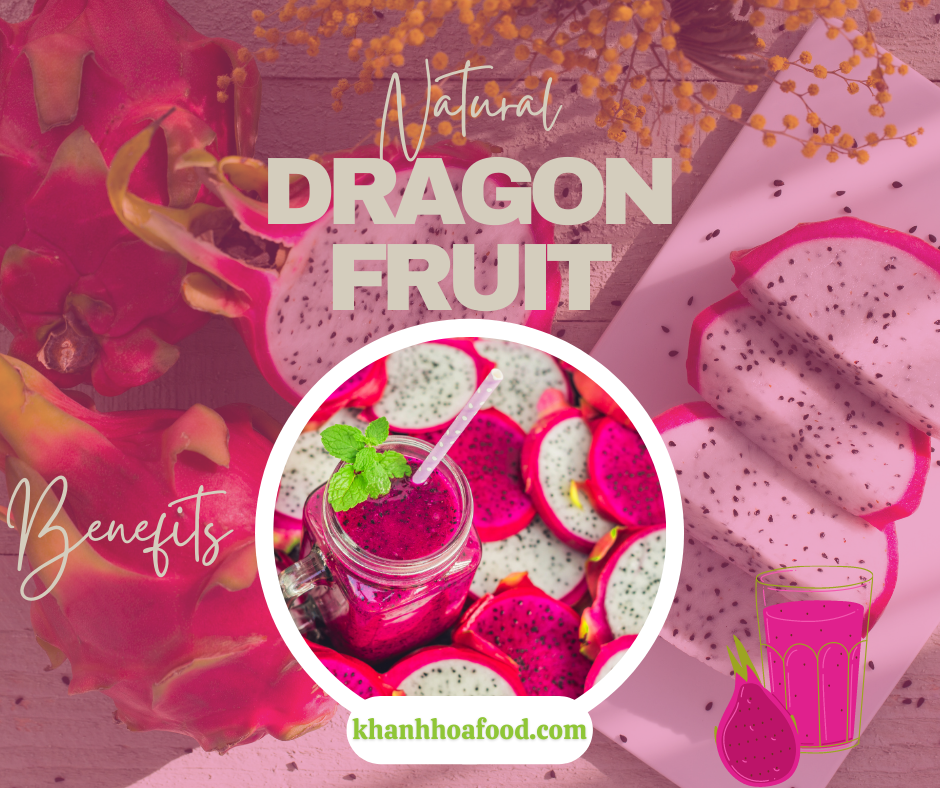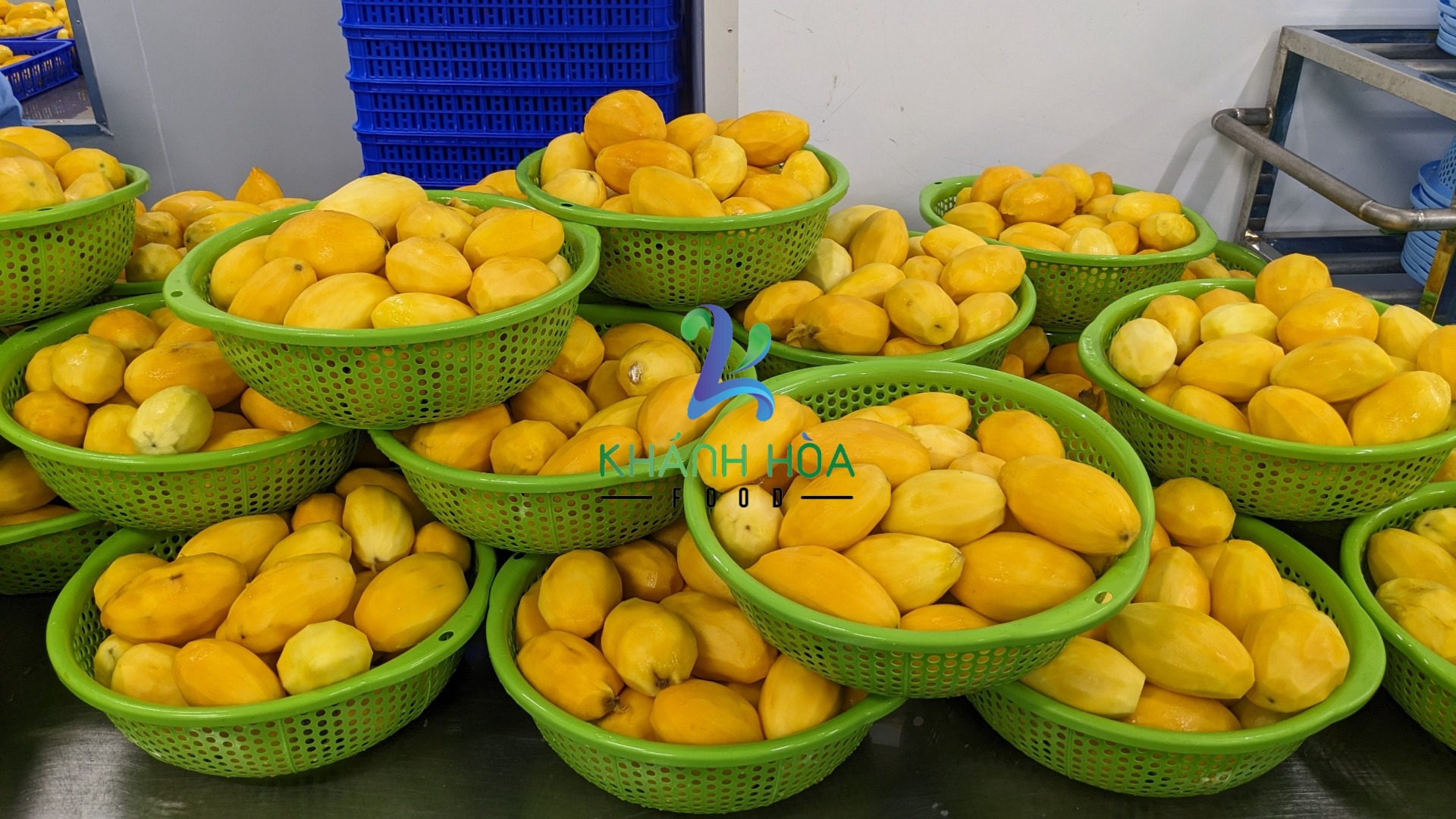Vietnamese Durian, The King Of Fruits, Sầu Riêng
Vietnamese Durian, The King Of Fruits, Sầu Riêng
Vietnamese Durian, the King of Fruits, Sầu Riêng
Vietnam has an estimated 20-30 native durian varieties, undiscovered and unnamed treasures. Most varieties in Vietnam are very mild and taste more like vanilla than durian, with a mild aroma, although I thought the wild highlands durian were some of the best durians I have ever tasted, comparable to those I enjoyed in Singapore, Thailand and Indonesia.
The Love Story
Vietnamese storytellers, however associate durians with an ancient love story. The country’s legend of the durian started after the Tây Sơn uprising was squashed by Emperor Gia Long (Nguyễn Ánh). An unnamed rebel hero became embroiled in a witch hunt spearheaded by Gia Long to eradicate all those who were pro-Tây Sơn.
Assisted by kind-hearted neighbours, the hero became a fugitive and headed southwards to Chenla (Chân Lạp), an ancient country which spanned most of today’s Cambodia, southern Vietnam and even parts of Thailand and Laos.
On the way to the foreign land, he encountered a mother and daughter in a tea house. As it turned out, the pair were Buddhist pilgrims travelling to a famous mountain-bound temple, unfortunately the daughter caught an illness mid-trip. Our hero, being the Renaissance man he was, also happened to be well-versed in medical practices. He magically cured the damsel off any diseases and took them home on his boat.
Naturally, the maiden was taken with him and they settled down in Chenla in a home with ancient white picket fences and spent their days farming. In their garden, they also planted a tu-rên tree, or durian in Khmer (pronounced as thou-ren).
After ten years of happiness, the couple unfortunately had to part due to the wife’s illness following a trip. After some time, his relatives in Vietnam informed him that Gia Long had stopped coming after old enemies and encouraged him to return home. On the night before his voyage, his wife appeared in his dream, assuring him that she would follow wherever he goes.
Coincidentally, their durian tree only produced one fruit that year, which magically fell at his feet before he left for Vietnam. The “Việt Kiều” (literally translating to “Vietnamese sojourner”) returned to his old village and received warm welcome from the neighbours. He made a living as the village teacher and planted durian trees all over the town.
The villagers, shocked and weirded out by the stink of the strange prickly fruit were hesitated to taste it. However, after our hero told them the story of how he found love in a hopeless place, they were touched by his star-crossed romance and started developing a fondness for the pungent delicacy.
He died three days after the wife’s three-year anniversary under mysterious circumstances. The locals, moved by his love for the ill-fated wife, started calling thouren fruits sầu riêng, which literally translates to “sadness in solitude.”
Origin
Durian’s native land still remains an ongoing debate. While many people insist that it’s originated from Borneo Island, which is shared by Malaysia, Indonesia and Brunei, the Filipinos also claimed that they are the first to discover the King of Fruits. Whatever the answer is, through passage of time, durians have travelled far from its homeland, to Thailand (one of the world’s leading durian exporter), Vietnam, Laos, Cambodia, Singapore, Myanmar and even further than just Southeast Asia, to Sri Lanka, India, Australia, Hawaii, Brazil or even the African island of Madagascar.
Planting
Young durian plants develop slowly with weak roots. The young plants should be kept in the nursery for about one year before field planting. Spacing varies from 8 to 16m apart, with 10 x 10 m the most common spacing. At the closer spacing the orchard may need to be thinned after 8 to 10 years.
As young durian plants cannot tolerate strong winds and sunlight, they are normally planted together with other nurse trees, such as bananas in a mixed plantation. Planting should be done in the rainy season.
Ecology
Durian requires a hot, humid climate for luxuriant growth but can also be grown in slightly cooler areas such as the highlands in the tropics and high latitude region such as Đắk Lắk, Đắk Nông, Lâm Đồng and in Hawaii. A well-distributed rainfall of 1 500 mm per year or more is needed, but relatively dry spells stimulate and synchronize flowering. It thrives well in deep, well-drained and light soil, but also grows normally in heavy soil provided there is good drainage. Due to its heavy bearing and the weight of numerous large fruits on a branch, a sheltered site is desirable to prevent damage from strong winds.
Odour
For over a hundred years, travel writers have tried to describe the taste and smell of durian however, they’re nowhere closer to being able to describe it helpfully to someone who has never experienced its unique taste and smell. In 1856, Alfred Russel Wallace sent a letter to Sir William Jackson Hooker describing the fruit as: “A rich custard highly flavoured with almonds gives the best general idea of it, but there are occasional wafts of flavour that call to mind cream-cheese, onion-sauce, sherry-wine, and other incongruous dishes.” Anthony Bourdain (an American celebrity chef, author, and travel documentarian), who actually enjoys eating the stinky fruit, colourfully describes the aftermath of eating it: “Your breath will smell as if you’d been French-kissing your dead grandmother.”
It is the quite unusual smell which makes the Durian one of the most unique fruits to ever exist. Such odour often yield mixed reactions from different people ranging from deep appreciation to pure disgust. Six times larger than the cantaloupe, its green thick, rough, thorn-covered husk looks similar to the jackfruit but its thorns are more projected and definitely sharper. A knife is needed to cut through the outer shell while extra caution is required to break open the rest of the husk to avoid hurting one’s hand from its thorns. Once open, it is noticeable how the inside is divided into cells holding a few of the cream-colored custard-like flesh in every compartment. It is from such rich flesh where the strong smell, which others find especially tempting, while others label it as unpleasantly nauseous and offensive. Even with its shell intact, the odour remains overpowering and penetrating which could be detected from a distance.
Buying Process
Durian is purchased by weighting and packaged in styrofoam on the spot, unless you request otherwise. When buying durian, the vendor will give you an entire piece to taste before you buy. If it doesn’t taste good, you may reject the durian. Remember to check all sides for worm entry sites. Tell the vendor whether you would like a bitter or sweet durian.
Post-harvest Operations
Fermentation sets in as soon as the fruits drop from the tree and it will spoil within a few days. Those picked before ripening can last more than a week. The fruits are considered ripe when they emit their characteristic odour. To open the fruit, a sharp, pointed knife is inserted through longitudinal marks, and segments are forced to split apart. Once open, the fruit should be eaten immediately, but the flesh, sealed in plastic container, can be kept in the refrigerator for a week or in the freezer for months without spoiling and changing its flavour.
Young vs Old
The fruit changes significantly over a very short period of time. When it is harvested early, it is almost considered a vegetable because the flesh is hard, easy to handle and bitter rather than sweet. People who enjoy eating durian usually prefer the fruit to be over-ripened, when the citrus and sweet flavours are much more prominent. Although the fruit becomes messier by that point with a consistency that is comparable to that of sour cream. Traditionally, durians are eaten after they have fallen to the ground on their own accord, however, durian farms often harvest the fruit earlier in order to ship them overseas.
Average Cost
Durian is the most expensive fruits in large cities like Hồ Chí Minh City and Hà Nội. In Hồ Chí Minh City, a durian will cost about 40-60,000 dong per kilo. In the production areas the price averages around 30,000 dong/kilo, although the cheapest durian, Khổ Qua Xanh, sells
for as low as 15,000 dong per kilo.
Yin and Yang
The Chinese consider durian and mangosteen to be the king and queen of fruits because of their opposing flavours – the durian is ‘warming’ due to its pungent smell and rich consistency however the mangosteen is ‘cooling’ because of its juicy flesh and slightly acidic taste. Therefore, it’s a natural tendencies to believe that to consume durian and mangosteen at the same time will reduce the heatiness associated with durians. However, there is no scientific research to support this. The habit of eating durians and mangosteens together probably stems from the fact that the two fruits are harvested at about the same time.
When Is Durian Season in Vietnam?
Vietnamese durian trees bear fruit only once a year. The season in the lowland provinces starts in May and peaks in June. The highland season peaks a few months later, in late August or early September. You can expect to find durian in Vietnam anytime between May and September.
Most Popular Varieties
The most popular varieties are Ri6 (pronounced Ri Sáu), it has a distinctively bright yellow color flesh, similar to the intense coloration of a Musang King durian in Malaysia. The flesh is thick and fibrous, with a strong egg-flavour that reminds of many Thai varieties, and Chín Hóa, which has enormous arils. For the wilder, highland Kampung durians, head north into the Central Plataea.
Below are some of the most popular durian species:
Sầu Riêng Chín Hoá
This durian is named after the farmer who discovered it 30 years ago, Mr.Văn Hòa from Đắk Lắk. It’s large and very round, like a pumpkin, with a huge amount of flesh.
Sầu Riêng Bí
Found in the Mekong Delta
Sầu Riêng Cuon Bo Co’m Sa’u (Cow House Milk Meat)
This durian tastes like whipped cream. It would be great for those new to durian or who don’t like durian, as it has almost no durian flavour and tastes a lot like sweetened milk or cream. Found in the Mekong Delta.
Sầu Riêng Hạt Lép Cai Lậy Tiền Giang (Small seed durian from Tiền Giang province)
This is a very fleshy durian, as indicated by its name: the small seed. There are numerous “small seed” durians in Vietnam, each one named after the province of its origin.
Aầu Riêng Khổ Qua Xanh (Green Vegetable)
This is the “kampung” of Vietnamese durian. It has large seeds, small flesh, but a strong flavor and smell. It’s the cheapest durian and sells for as low as 15,000 dong/kilo.
Dona
The Dona durian is actually a Thai Monthong grown on a Vietnamese rootstock. It’s registered under the company Dona Techno. Company officials believe it to be slightly sweeter than Monthong grown in Thailand.
Where to Get It
Durian can be purchased anywhere in Vietnam, but it only grows south of Hue. Surprisingly, the humid flat lands of the Mekong Delta are a major production area. According to statistics from the Southern Fruit Research Institute (SOFRI), 92% of the durian produced in Vietnam is grown here. Here’s a list of the major growing areas where durian can be easily found:
Đắk Lắk (it is located in Vietnam’s Central Highlands, and is home to quite a few indigenous ethnic minorities, such as the Rade, the Jarai and the Mnong, among others).
Đắk Nông (is a province of Vietnam. It is located in the country’s Central Highlands. The provincial capital is Gia Nghĩa).
Bến Tre (It is one of the country’s southern provinces, being situated in the Mekong Delta).
Bình Thuận (is a province on Vietnam’s southeast coast, east of Hồ Chí Minh City. The capital region of Phan Thiết has a harbor full of colorful boats and beaches such as Hòn Rơm and Bai Rang).
Trà Vinh (is a coastal province in southern Vietnam. On the edge of its capital city, sits the ancient Âng Pagoda, one of more than 100 Khmer pagodas in the area).
Đồng Nai (is a province in the Southeast region of Vietnam, located east and northeast of Hồ Chí Minh City. The largest city in Đồng Nai is Biên Hòa. Prior to Vietnamese colonization, the area was dominated by the Funan, Chenla, Khmer empire and subsequent influences until 1627).
Lâm Đồng (is a province located in the Central Highlands region of Vietnam. Its capital is Đà Lạt).
Benefits and Side Effects
Despite the stench, durian is extremely healthy, even more so than many other fruits. Naturally rich in iron, vitamin C, and potassium, durian improves muscle strength, skin health and even lowers blood pressure. Furthermore, one small durian contains 23g of dietary fibre which is nearly all of your daily nutritional requirement.
For this reason, moderate consumption of durian fruit is very beneficial for our stomach and improves our digestive health. The dietary fibres present in the durian acts as a natural laxative which means it improves our bowel movement, and ensure smooth elimination of stool from our system.
However, it is important not eat them in excess, due to its high in calories and carbohydrates. Therefore, if not careful, durian can cause weight gain. With an average 1 kg sized durian having close to 1,350 calories, eating one durian can rack up as much as 68 per cent of the daily 2,000 calories recommended for an average adult.
Furthermore, if you have diabetes and must count your carbs, you cannot feast on durians because of the fruit’s high sugar content. Durians contain simple sugars – sucrose, fructose and glucose. An excessive intake of durians may lower the blood sugar to a very low level and thereby increases the risk of hypoglycaemia. Hypoglycaemia is a condition in which our blood sugar drops down below the normal level and is characterized by the symptoms such as excess sweating, excess hunger, fatigue, light-headedness, palpitation, blurred vision, and anxiety, etc.
It has been found that consuming durians might develop allergic reactions in some individuals and they should avoid the fruit. Some common allergic symptoms that may arise are hives, nasal congestion, runny nose, throat discomfort, diarrhoea, skin rashes, redness, itching and vomiting.
The high dietary fibres present in the durian may lead to stomach discomfort and other digestive problems like gas and bloating etc. Additionally, durian fruit is also known to increase heat in the body. This can be fatal for the fetus and increases the risk of miscarriage. For this reason, pregnant and nursing mothers should eat durians in moderation.
Concerns
Main problems in Vietnam include the lack of good cultivars since most of the existing plants were grown from seeds, which are not true-to-type, and they are not uniform, thus the quality of the fruits is not standardized and normally quite poor according to international standards. Whereas in Thailand, only grafted plants are used. Poor quality grafted plants originating from unknown cultivars are a further problem.
Single crop is very vulnerable, so chemicals, hormones and pesticide are greatly used in an effort to defend the crop from these factors, at the same time, these chemicals tend to destroy the surrounding ecology.
The rising prices are causing many farmers to convert rambutan and rubber plantations to durian. Furthermore, cutting down trees to cultivate durians for commercial purposes harms plant genes, creates instability for farmers’ livelihoods and contributes to food insecurity over the long term.
China’s dominance over the supply chains has made farmers nervous about the potential to fix prices and reduce incomes.

